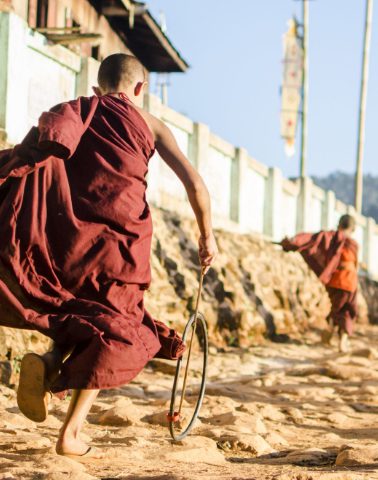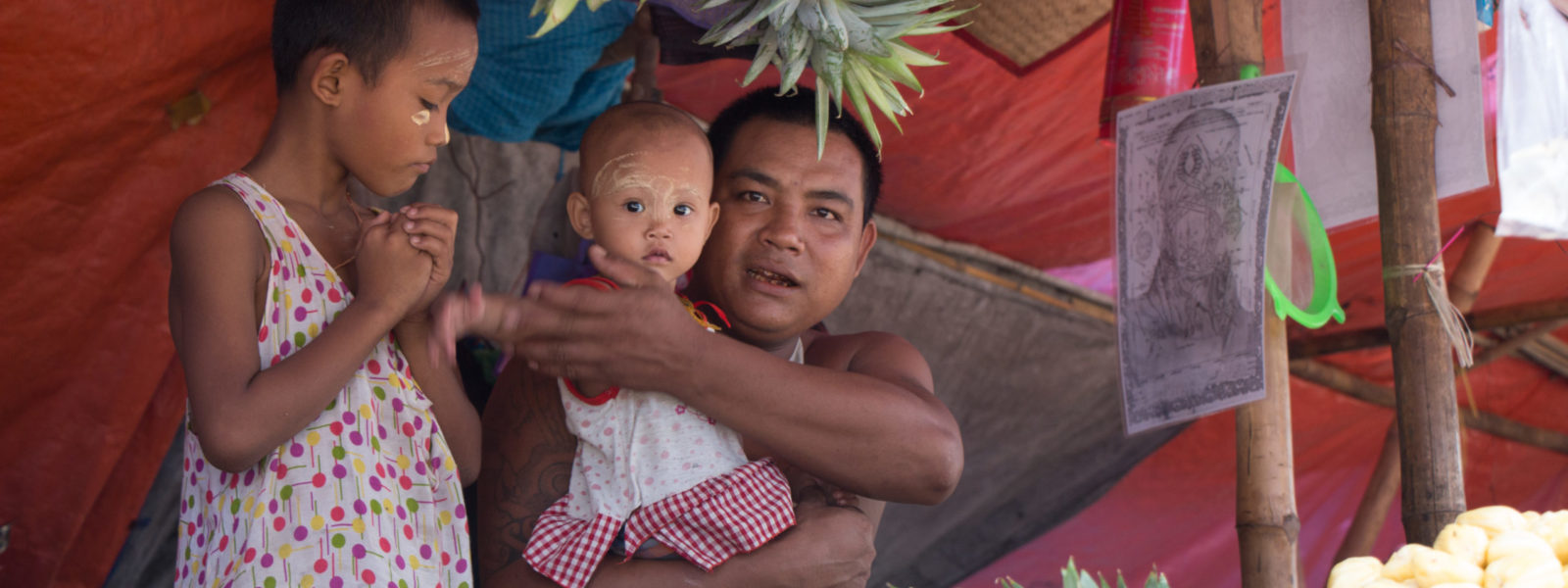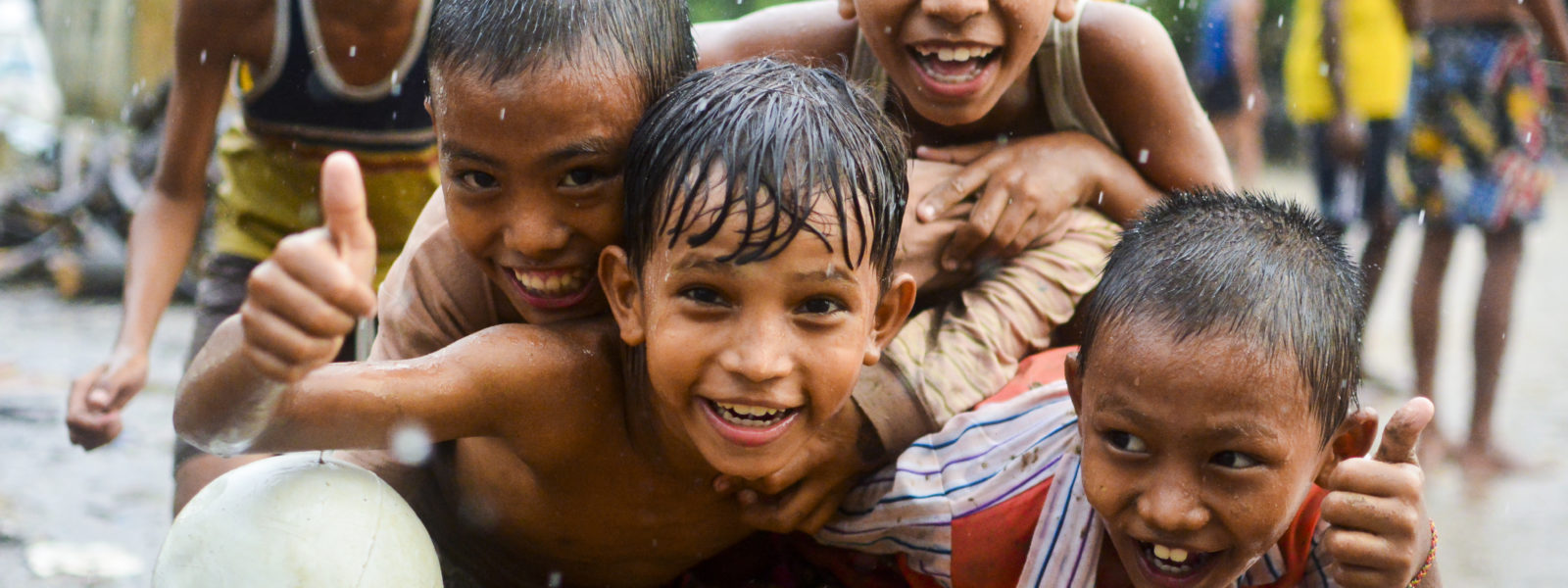
Subscribe to our mailing list
We are still here! Let us send you tips for travelling through Myanmar and stories from the road …
That said, outside Yangon vast swathes of the country remain, if not lost in time, decades behind the rest of Southeast Asia.
A fifteen minute ferry ride from Pansodan Jetty brings passengers away from the rushing flow of the grand Strand Road to the village of Dala over the Yangon River; a sprawling settlement segmented by bumpy dirt tracks, ramshackle rows of lopsided houses and an assortment of seemingly liberated livestock lolloping down the street.
Separated from the metropolis by the swirling brown rapids of the river and surrounded on three sides by acres of paddy, Dala, one of Myanmar’s poorest and most isolated villages, receives little of the attention that is lavished upon Yangon. But Dala is vibrant and multifaceted as well and, coupled with its slightly grander twin to the east, Twante, makes for an illuminating day-trip when staying in Yangon.

From early morning until sunset the Dala ferry departs from Pansodan Jetty every 20 minutes. A little café on the first floor of the ferry offers weak but complimentary green tea and there are sachets of Premier three-in-one instant coffee mix for 100 Kyat or so – immensely popular with the locals.
Hawkers pass by offering Red Ruby cigarettes and the traditional Burmese cheroot, spitting scarlet jets of chewed betel-nut over the side of the boat as they go. Boys in snapback caps and Premier League football shirts saunter about the deck swinging bags of quails’ eggs and, with meaningful looks in their eyes, impress upon male tourists the virile properties of these snacks.
On the ferry the Burmese will take part in one of their favourite pastimes of feeding the birds: a dramatic and at times slightly alarming spectacle, with the ever-growing swarm of gulls nearing all the time while enthusiastic onlookers whoop and applaud particularly acrobatic swoops and plunges.
On arrival in Dala one must press through a clamoring cluster of taxi and pick-up truck drivers bellowing out the fares for Twante and Letkohkkon Beach. A sprawl of motorbikes await, some stationary, others slowly edging their way through the crowd, almost all wheezing under the weight of a family of five, 12 year-old son in command at the fore, his 8 month-old sister slung under one arm and slumbering contently.
All about are strewn red and green plastic tables and chairs of the teashops hosting old men, young men, fat and skinny men, all drinking the milky tea ‘la paye bi-leh’, smoking cheroots and gazing with unabashed curiosity at the foreign faces in their midst.
Keep your head down, persevere, and as soon as the cacophony of chaos arose it will subside to the gentle bustle of a market town. All about are strewn red and green plastic tables and chairs of the teashops hosting old men, young men, fat and skinny men, all drinking the milky tea ‘la paye bi-leh’, smoking cheroots and gazing with unabashed curiosity at the foreign faces in their midst.
Women and their daughters pass by, graceful in their colourful longyi, their faces heavily plastered with thanaka bark paste and balancing on their heads curvaceous wicker baskets brimming with vegetables and herbs. Behind rows of parked motorbikes are open-front barber shops where punters study the posters on the walls and choose between the mullet of Gary Neville and David Beckham’s mohican.
Earthy tracks run adjacent to the river in both directions. Along these the pace of Dala subsides yet further. Venturing down one you will have as company few others save for scraggly goats gambling in the ditch and scavenging jungle fowl chasing off interfering black piglets.
Straight ahead stretches a potholed road which leads to the main drag connecting Dala and Twante. This can be taken by either pick-up truck or motorbike. (We would recommend the latter as it allows for freedom to stop at a handful of sites on the way. Whichever opted for, ensure that a clear fare is settled before hopping on).
15 minutes into the journey, through acres of luscious paddy field stretching into the distance, you will come to one of the more curious Myanmar pagodas, the Mwe Paya Snake Pagoda. Mwe Paya is situated at the centre of a glassy pond, connected to the banks by four ornate bridges. A parched and primeval looking tree rises from the floor in the pagoda upon the branches of which hang thick, languorous Burmese pythons. The snakes are harmless, coming and going as they please and fed by the local nuns on a ho-hum diet of milk and rice.
Just beyond Mwe Paya is the Field of a Thousand Buddhas where rows of identical Sitting Buddha Images clad in robes of red perch on crumbling pedestals. When wandering through the brambles off the beaten path, despite the benevolent expressions all around, the rural hush and trailing eyes make for a slightly eerie experience.
Greeting you upon your arrival in Twante will be Shwesandaw, a classic Myanmar pagoda standing 73 metres tall and believed to have been built by the Mon an estimated 2, 500 years ago. Just beyond Shwesandaw is the Oh-Bo Pottery Quarter of Twante, Myanmar’s most famous pottery hub.
The ware of the wrinkled artisans that live here can be seen throughout Yangon Division and the Ayeyarwady Delta, ranging from saucers and sugar dishes to pots large enough for a small child to hide in. Visitors to Oh-Bo will be ushered into the dimly lit workshop to watch old women cleave out great chunks of clay, batter them into the shape of a large salami, then pass them to the men for forming on the potter’s wheel.

After the excitement of pythons and pottery, travellers can nip into the centre of Twante for refreshments. There is a Dagon Beer Station just beyond the British clock tower serving crispy Thai-style fried pork which can be enjoyed while looking out over the glimmering Twante canal.
If leaving Twante on the eve of dusk, just beyond Shwesandaw on the right-hand side of the road to Dala there is a parched plot of land bisected with what looks like a volleyball net. This is the chinlone court and at this time of day young men liberated from work congregate to play. The game is conducted with a cane-ball; the men, bare chested and with their longyi hoisted up between their legs (referred to as putso) demonstrate remarkable dexterity in keeping the ball off the ground and over the net, using any part of their body save for their hands and arms.
The game will attract a squad of restless young boys not yet big enough to take part and brightly-dressed women with bairn on their backs may congregate at the corners to watch for a point of two. At the bamboo canopies just beyond the court, cheroots will be lit by older onlookers and the first measures of whiskey poured. The light at dusk will whet the blades of paddy grass and the conical hat of the fisherman opposite, splashing around in the ditch for the last catch of the day.
Watching a sunset chinlone game at the gates of Twante – perhaps with a glass of the local palm toddy wine and a plate of fried and spiced mice – is as spectacular as a sunrise over Bagan or the virginal beaches of the Mergui Archipelago.
Neither postcard-perfect, nor harking back to a former glory, the scene is prosaic and unconscious of its own beauty. Witnessing moments of life like this, as the heat of the game and the passage of daily routine render the tourist both unobtrusive and unobserved, life in Myanmar rushes over a visitor with no more friction than the current of a stream over bare feet. It is in witnessing scenes like this that Myanmar’s beauty is displayed with all its seductive, wreaking force.
The rush of urbanisation that has swept over Yangon will soon breach the river with the construction of the Yangon-Dala Bridge. This is only good news for the desperately poor villages, allowing for quick commutes to the city and encouraging customers, tourists and investors over the river.
Watching a sunset chinlone game at the gates of Twante – perhaps with a glass of the local palm toddy wine and a plate of fried and spiced mice – is as spectacular as a sunrise over Bagan or the virginal beaches of the Mergui Archipelago.
There will be much to celebrate when Dala and Twante become thriving hubs in their own right. Like the potholes and poor phone signal of Yangon a couple of years ago, as this country opens up to the world once more, much that is seen today is only ephemeral; Dala and Twante will be unrecognisably altered.
Perhaps no bad thing for the inhabitants, but it also means that to see the pottery, the pythons and the pagodas in serenity one needs to visit soon. There will be much of beauty in Dala and Twante in five years time, but to take the bustling ferry and have your hair cut like David Beckham, one needs to visit now.